1. Introduction to Peppertype AI and TextSynth AI
Before we compare, let’s just give a short description of these two AI writing tools:
Peppertype AI
Peppertype AI is an automated content generation tool specifically created for writers, marketing professionals, and businesses. It exploits the latest breakthroughs in NLP (Natural Language Processing) algorithms to come up with text which resembles human style, semantic coherence, and creativity.
TextSynth AI
TextSynth AI is another AI-based text generation system that employs the technology of generating coherent and contextually relevant text, in an automatic way. It uses modern language models to make content that is suitable for its tons of target applications.
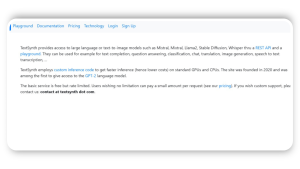
2. User Interface and Ease of Use
When comparing AI writing tools, the user interface and overall ease of use play crucial roles in determining their effectiveness. Let’s examine how Peppertype AI and TextSynth AI fare in this aspect:
Peppertype AI
Thus, Peppertype AI presents a very neat and user-friendly interface, which is quite literally easy to learn and use. To keep users satisfied and the work done quickly, the platform is built very simply, with different categories and different templates- the user can find, visualize and choose.
Major attributes of Peppertype AI’s user interface include:
The content creation flow is just relatively simple
The types of contents are nicely packed and let the user know what they are
Templates for different writing tasks are easy to use
Input boxes for compulsory information are simple
TextSynth AI

The TextSynth AI interface, on the other hand, could be said to be a minimalist one. It is focused on the users getting a lean user experience, which would be in concord with the meaning of no-frills (they use fewer and simpler options in some cases.) Remarkably, however, though visual appeal could be a bit of a problem with TextSynth AI, it still stays true to functionality more than anything else.
Key aspects of the user interface of TextSynth AI are:
No cluttered interface, only a textbox to input your prompt
With fewer distractions, one can hit the center of the matter easily
Fast access to the generated text
An intuitive, decentralized control for changing the output parameters
3. Content Generation Capabilities
The primary purpose of both Peppertype AI and TextSynth AI is to generate the best quality content. Here is the content generation comparison:
Peppertype AI
I was sure that Peppertype AI can produce many content types and then I saw this happening live in the platform. Users are able to benefit from templates and business case scenarios offered by peptotype.ai for various writing tasks and they are thus enabled to show a lot of versatility in their contents. The full list of content types that can be supported by Peppertype AI includes:
Weblogs and articles
Social media captions
Product descriptions
Ad copy
Email subject lines and body content
Video scripts
Meta descriptions and title tags
Peppertype AI’s largest strong point could be the fact that it can produce specific content that suits the marketing and business needs of the companies. The platform leverages domain knowledge and engaging copywriting practices to create relevant and high-quality content.
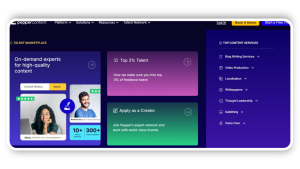
TextSynth AI
TextSynth AI generally provides a broad-based solution to the content generation problem. So notwithstanding the fact that it may be illegal for the tool to focus primarily on providing templates, it offers users more input and output options in other points than those natural language generation alternatives can afford. TextSynth AI is good at:
Create paragraphs and passages that follow a consistent theme and contain the information given in the prompt
Continuing text based on given prompts
Help with the creative writing process
Doing translations of languages
Answering inquiries and generating explanations
The real strength of TextSynth AI is its ability to grasp context and to come up with relevant content with minimal input. It is particularly useful for the aspects of writing that are more freeform, that is, those that do not have just one right answer, such as illustrative ones.
4. Language Support and Multilingual Capabilities
In the context of our globalized world, the ability to generate contents in various languages becomes a significant trend. Peppertype AI and TextSynth AI will be looked at under the category of language support in AI tools:
Peppertype AI
Peppertype AI by and large focuses on content generation in the English language. Thus, it may suffice for most users; but it can still be a drawback for those who are in need of multilingual content-creation. Nonetheless, it offers some language customization options including the ability to modulate the write-up with varying shades of English speaking market lexicon.
TextSynth AI
TextSynth AI, on the other hand, is able to address several foreign language issues. Thus, this platform makes it possible to provide text in various languages apart from the English language thereby it is considered to be more user-friendly choice for those who require such capabilities. Moreover, TextSynth AI is also able to operate as a translator, which means it can help people bridge the language barriers in the content creation process.
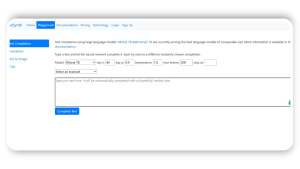
5. Customization and Fine-tuning
Customizing and tweaking AI-created content is something that is fundamental to keeping a consistent brand voice and meeting specific content requirements. The comparison below should clarify the differences with respect to this topic:
Peppertype AI
The most feature-rich product available in the market currently, Peppertype AI provides customization options of varying degrees. Users are able to do:
Select different content styles e.g. formal, informal, or aggressive
Alter the length of generated content.
Supply keywords of the product description or some main points to include data for the content
Create templates that embody the rules and specifications of the brands
These features enable the user to have a greater say in the design of the generated content, and they also facilitate the use of different themes across various contents.
TextSynth AI
TextSynth AI is different in that it does not predominantly have preset options as Peppertype AI, but it allows the user to do most of the work in setting the system parameters. The user is enabled to take actions such as:
Change the generated text from too creative and random to strictly to specific topics with the “temperature” metaphor.
Specify the length of the text that is to be generated
Refine the output by providing highly detailed information (e.g. prompts and context)
It is iterative and multifaceted allowing the user to develop the output with many steps
Such a high level of user authorization leads to narrower and more focused results which are a more welcome sight for expert users though it is not without a steep learning curve.
6. Integration and Workflow Compatibility
For many users, the capability of integrating AI writing tools into existing workflows is important. Let’s see how Peppertype AI and TextSynth AI fit into the context of integration and compatibility:
Peppertype AI
Among other things, Peppertype AI presents a battery of integration opportunities to users to leverage the content creation processes and thus optimize their operations:
Browser extension that quickly works as an access point to the application
API allowing Peppertype AI to be easily inserted into client applications
Integration with popular content management systems (CMS)
Collaboration features so the team could produce content together
These tools are supposed to be used by the users to install Peppertype AI to their content-related processes as they will help them in this effort. In the case of the text-based generation function, the most important aspect, positive and frictionless integration of reactional parts to the engine is highlighted.

TextSynth AI
TextSynth AI basically pursues an orientation to the developers:
Powerful API for easy deployment into different applications
CLI (Command-line interface) for developers and advanced users
Custom model support and arrangement
7. Pricing and Accessibility
Cost gives away a lot in terms of favoritism for choosing an AI writing tool. We will look at how the pricing structures of Peppertype AI and TextSynth AI compare:
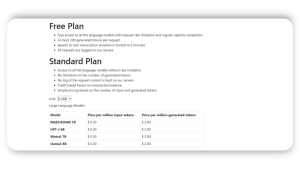
Peppertype AI
Peppertype AI usually comes in a multi-tiered pricing model as such:
New users can use a free trial first
Basic plan with features that are less than the given ones and a maximum word count
Advanced features and more word count with a pro plan
A special enterprise plan customized for large-scale usage and at the same time providing solutions unique for companies
It is worth noting that this pricing structure comes with both ends of the spectrum. That being free-trial service may get the users acquainted with the software while, on the other hand, the basic subscription would serve as a model of a structured enterprise plan.
TextSynth AI
Conversely, TextSynth AI is rumored to use a pay by utilization technique, and it can be an occasional user fee. Fun usage can also be the subscription models which give different access to the API. Enterprises and people with a fix or a durable income at their disposal may seek that pricing option.
Custom-made pricing catered to companies that have got big volumes
This is an affordable mode of pay-asyou-go type for those users who have just occasional needs, while companies that demand a greater amount of service can benefit from a volumetric discount model that is being used.
8. Output Quality and Accuracy
Of course, the quality and the correctness of the output are the main concerns when it comes to AI writing tools. Let’s compare how Peppertype AI and TextSynth AI are faring in this respect:
Peppertype AI
In general, Peppertype AI offers well-structured and high-quality content that is relevant to the given prompts, in my experience. The areas where the. software excels are:
Consistency in maintaining the desired mode of expression
Correct usage of particulars in the field of activity
Text is organized in a clear and logical manner
No or little grammar mistakes/no spelling errors (if any at all)
The AI ought to start involving in ethical decisions that humans alone were usually involved in, for example, when AI talks about medical issues when too much freedom of speech may lead to questioning the behavior of a general performing an operation which in turn may cause the objectivity issue to such an extent that the effectiveness of the entire process is jeopardized. Such a case presupposes a strong synergy between the AI and a human with a strong medical background with the aim that this AI mainly and the human in a supportive role, will change the way cancer is being scanned, which resulted in a more appropriate, effective therapy that did not shave off the patient due to ionizing radiation. The AI could easily understand and perpetuate dialogue with respective role-playing as the doctor’s subordinate in question, while the doctor has widened his knowledge with the use of AI suggesting more alternate routes of diagnosis and therapy. Though the AI does a really good job at handling its intended tasks, sometimes it is necessary for a person with a background in that field to check the facts as well as for more fine-tuning, especially when the analysis is very technical.

TextSynth AI
The quality of the TextSynth AI outputs is much less predictable and depends all too heavily on the input and settings used. In addition to the prevention of exceeding the maximum number of policy and regulation violations by the system, the AI pinned down the following ways of actions that are on the positive side of things:
The system has almost the unlimited capacity to generate creative and unique content.
The contextual richness of the system is even more of a strength.
It has a lot of flexibility when coming up with different writing styles
It is strong at meeting very demanding multilingual language needs
In contrast, to achieve the preconceived output, users may have to refine their inputs and perform multiple iterations. This is especially valid for the cases of very specific content requirements. The mixture of probabilistic models like the racial/ethnicity of students, the socio-economic background-osiblings, their academic status, and families contribute to the differential effect of the decisions of which factors are the children-students themselves, their families, their environment, or the side of the educational process that AI should predominantly serve. As far as the development of the models is concerned the difficulty of generating correct text from little to no subject area-specific or very detailed information or wrong inputs is an undisputed problem that the future development of the TextSynth AI is likely to tackle. It has been observed that the integration of the intelligence in the virtual agents changes the face of language learning.
9. Learning Curve and Training Requirements
The easiness of mastering the tool and being able to follow up the steps of implementation makes an AI writing tool to be a preferred choice which in turn may result in the long-term use of that tool. Let’s take a look at the learning curves of Peppertype AI and TextSynth AI:
Peppertype AI
Thus, the great advantage would be its user-friendliness so that everyone interested shall have an easy time jumping between the tasks. People naturally would search for some educational material that would make them comfortable to use the system. One of the sampling ideas can be this paper where different soft-skill competences are awarded by ascertaining learning progress in task accomplishment. Students and project leads would master their own development skills properly and would be liable to turn in professional tasks accordingly.
Stylus-based paradigmization with decent tooltips and a couple of simple advantages for casual users
Pre-defined templates and relevant information provided
Crystal-clear instructions from the documentation and video tutorials
Quick, professional advice made from customer engagement platforms for answering general questions
Here are some recommendations for the simplified verbiage of the generated candidate list:
One of the involved and adventurous aims of the new language policy written and implemented during the last school year is to bring teachers’ attention to the educational potentials that new technologies bring, to mobilize them towards developing their digital competences and to create an enabling environment for 21st century learning. Nevertheless, one of the aims of the new language policy is to streamline surface explanations that do not make sense to deeper analyses of relations in subjects. One way to do this could be to move away from the memorization of formulas and instead introduce hands-on projects that incorporate real-world problems.
I personally think positive art therapy could be successfully applied to children’s treatment for various mental and emotional issues, and yes, their moods and behavior would greatly improve as a result of drawing, painting, or playing with clay, as these activities help them release their fear and anxiety. No, I haven’t dismissed gaming. It is a good option for many children, and it is getting better. There is nothing bad about it as long as it doesn’t involve violence or other bad stuff. A man that thoughts are activities can tell what kind of person he is.
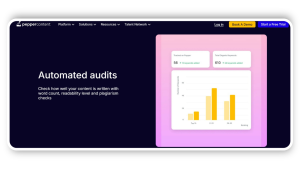
TextSynth AI
TextSynth AI may have a difficult learning curve for a group of users:
More open-ended interface peculiar to speaking and writing in correct grammar.
Understanding and adaptation of language models to the speaking tasks by students should come before the learning phase of the model.
Advanced features that may require programming knowledge to use them
The monumental task of describing all the advanced technical features to a larger public needs documentation that is exclusively written with advanced users’ needs in mind.
The aspect to which users may identify themselves plays a key role in the idea of electronic professors being versatile in tutoring through portrait drawing. Instead of using text-based communication, the student can draw an object and send it to the electronic educator via the internet using a drawing program such as TuxPaint and, in such non-verbal communication, learns different ways of drawing (being more creative) and gets to understand the teacher’s responses (drawing back and asking for some explanation, for example). The fact that the students send their drawings first gives the opportunity to distinguish the new concepts or vocabulary they have learned from the language aids used. The teacher would be drawing back as a technique to give the student a form of visual feedback. In this way, the drawing activity allows the student to better conceptualize the content presented by the instructors. Subsequently, the teacher can draw back to the student’s answer or propose a new idea, and the student should be able to proceed.
Frequently Asked Questions (FAQ) about Peppertype AI vs TextSynth AI
1. What are the main differences between Peppertype AI and TextSynth AI?
Almost entirely constructed around pre-defined templates and the assistance of a user-friendly intuition, Peppertype AI is mostly a tool for creative uses. On the other end, TextSynth AI has none of these limitations and can do more things with random text generation that suits it perfectly for developers as well as open-ended writing tasks.
2. Which tool is easier to use for beginners?
The straightforward and familiar layout of Peppertype’s user interface and its templates for beginners are the key factors that make it more user-friendly for beginners. In contrast, learning the TextSynth AI tool will be deemed more challenging especially for the ones not tech-savvies.
3. Can both tools generate content in multiple languages?
Basically, the text generation software has advanced multilingual ability, and therefore they can produce translated material in several languages. Peppertype AI generally extends its utility for content written in English, however, it also gives some language customization options.
4. Which tool is better for marketing content?
Peppertype AI is a limited edition for the creation of marketing materials and business. It consists of many different marketing materials that can be completed with various templates. It would be necessary for anyone desiring to develop auto-generated marketing content to take the time and effort to work with such templates in order to get started with Peppertype AI.
5. How do the pricing models differ between the two tools?
Peppertype AI is mostly about flexibility by means of the tiered subscription it uses which includes a complimentary version. TextSynth AI in usual scenarios works with a model of pay as per demand which makes it more adaptable to users who don’t have regular need for it.
6. Which tool offers better integration with other platforms?
Each of the two tool has its pros when speaking about the integration with other tools. Peppertype AI is able to integrate into the CMS systems and also provides access to collaboration features. Meantime TextSynth AI gives to its users powerful APIs for developers.
7. Can I customize the output of both tools?
Yes, both of them can be customized. The approach of Peppertype AI in this regard is to offer the chance to edit content style, length and keywords. Nonetheless, more detailed control is accessible in the other case, i.e., with TextSynth by feeding it with your prompts, and by parameter adjustments.
8. Which tool is better for creative writing?
TextSynth AI might be a better choice for creative wring acts due to its flexible nature and the fact it can generate different content combinations based on brief prompts. On the other hand, Peppertype AI represents a solid structure and as a result, its creativity is likely to be more confined and not applicable to some creative tasks.
9. Do these tools require human oversight?
Obviously, these tools need the intervention of human beings who can make the necessary corrections as per the exact TIP updates. The accuracy, relevance, and quality of the generated content have to be reviewed and revised by the human most of the time before they are used.
10. Can these tools completely replace human writers?
No, these tools are devised for assistance and amplification of human writing abilities, not for a 100% substitution of human writers. They work best as aids in the content creation procedure.

